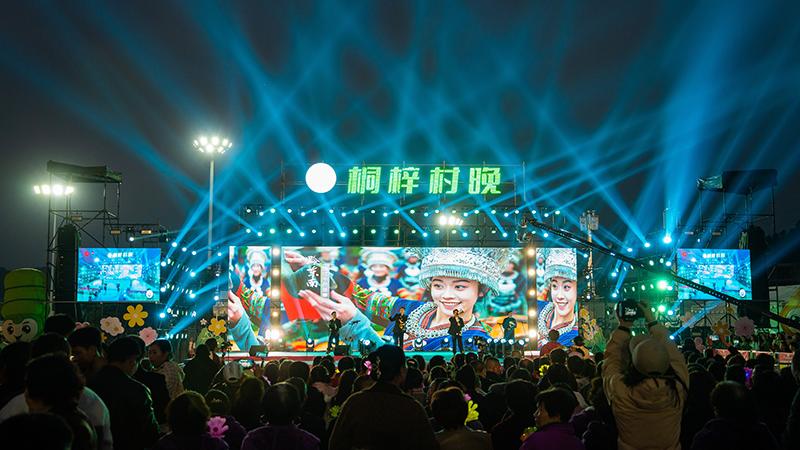China advances end-to-end governance of AI-generated content

An exhibition displaying AI-generated artworks is held in Jinan, east China's Shandong province. (People's Daily Online/Xu Zhou)
When planning an upcoming trip, Li instinctively opened a prominent AI application for recommendations. While the app promptly generated its usual suggestions, a newly added disclaimer caught his attention: "This AI-generated response serves for reference only. Please verify information carefully."
The rapid advancement of generative AI and deep synthesis technologies in recent years has fueled economic expansion, diversified digital content, and enhanced daily convenience. However, these innovations have simultaneously facilitated misinformation proliferation and disrupted digital ecosystems.
In response, China recently issued "Measures for identifying AI-generated synthetic content," which will take effect on Sept. 1, 2025.
A spokesperson from the Cyberspace Administration of China clarified that the measures aim to standardize the labeling of AI-generated synthetic content. Mandatory disclosure mechanisms enables to differentiate authentic from synthetic content while clarifying service providers' responsibilities throughout content creation and dissemination processes. The framework aims to optimize security protocols through cost-effective solutions and foster sustainable AI industry development.

AI-generated pictures are showcased in a subway station in Nanjing, east China's Jiangsu province. (People's Daily Online/Wang Luxian )
Tian, a user of a knowledge-sharing platform, encountered a film review stating: "This drama features a compelling narrative structure with multidimensional character development. Through episodic storytelling, it provokes critical reflection on contemporary social issues..." The post displayed a header label marked "Suspected AI-Generated Content" and received substantially reduced algorithmic prioritization in recommendation feeds.
A platform spokesperson clarified that existing community guidelines mandate disclosure of AI-assisted content creation. Non-compliant posts trigger automated detection protocols, resulting in mandatory labeling, visibility demotion in ranking systems, content collapse mechanisms, or potential account suspension.
Such governance protocols will gain strengthened legal foundations under the Measures for identifying AI-generated synthetic content. The regulations require online content distribution services to verify whether file metadata contains embedded identification markers. Upon detecting explicit identifiers or technical signatures of AI synthesis, platforms must apply: automated classification as suspected AI-generated material; prominent warning labels adjacent to content; public notification through standardized disclaimers.
Jin Bo, deputy director of the Third Research Institute at the Ministry of Public Security, further emphasized the regulations' expanded accountability framework. Key provisions now explicitly define obligations for application distribution platforms and auxiliary service providers, establishing comprehensive ecosystem governance spanning content creation, modification, and dissemination processes.
A pivotal innovation within the AI-generated content identification measures lies in the codified differentiation between explicit and implicit labeling systems. The regulations mandate that metadata associated with AI-synthesized content incorporate implicit identification markers, which systematically encode critical attributes including: content classification category; service provider identification (name/unique code); content serialization identifier.
Zhang Zhen, a senior engineer at the National Computer Network Emergency Response Technical Team/Coordination Center of China, elaborated: "As a supplementary protocol, the cybersecurity technical standard for AI-generated content identification specifies the metadata fields required for implicit labels. These fields are designed to record critical information while minimizing disruption to metadata processing and transmission, ensuring that AI-generated content remains traceable throughout its lifecycle."
These regulations not only enhance transparency and security in AI usage but also foster an environment that encourages innovation and responsible AI development.
Photos
Related Stories
- Will AI replace human jobs? A new look at the debate
- Chinese universities boost, broaden AI courses amid tech boom
- China harnesses AI to revolutionize smart breeding, crop development
- Chinese scientists expand AI in crops breeding to boost yield and improve varieties
- AI pediatrician to enter more grassroots hospitals in China
- AI brings golden opportunities for China's silver-haired generation
- AI empowers China's agriculture to harvest smarter future
- Can AI breathe new life into traditional Chinese medicine
- 2025 Appliance & Electronics World Expo held in Shanghai, with AI-powered products in focus
- Digital cat promotes eco-friendly items
Copyright © 2025 People's Daily Online. All Rights Reserved.









